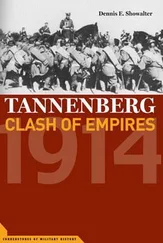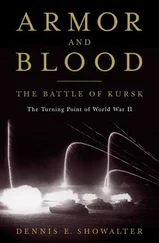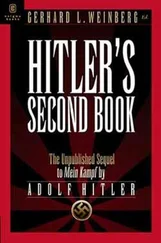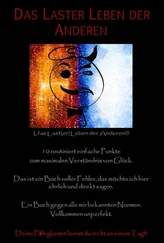Much of this was conventional, repeating wartime arguments that tanks were most effective in creating confusion and panic, in the pattern of antiquity’s war elephants. Positive theory on the use of tanks closely followed contemporary French concepts in projecting a first wave of heavy tanks acting more or less independently, followed by a second wave of lighter vehicles maintaining close contact with the infantry. But in contrast to the French, who saw tanks as the backbone of an attack, the Reichswehr’s infantry training manual of 1921 warned against the infantry laming its offensive spirit by becoming too dependent on armor.
These positions were in good part shaped by the tanks’ existing technical limitations. In particular they were considered too slow and too unreliable to play a central role in the fast-paced offensive operations central to Reichswehr tactics. At the same time, German military thinkers and writers, Seeckt included, recognized that even with their current shortcomings, tanks had a future. The trailblazer here was Ernst Volckheim. He had been a tank officer during the war, and afterward returned to his parent branch. In 1923 he was assigned to the Reichswehr’s Inspectorate for Motor Troops. That same year he published an operational history of German tanks, affirming armor’s continuing technological development and its corresponding importance in any future war. “If tanks were not such a promising weapon,” Volckheim dryly asserted, “then certainly the Allies would not have banned them from the Reichswehr!”
Above all, Volckheim argued, tanks were general-service systems, able to engage any objective and move in many different formations. In that way, they resembled the infantry more than any other branch of service. The tanks’ future correspondingly seemed to lie with emphasizing their basic characteristics: speed, reliability, and range. In contrast to a general European predilection for light tanks that focused on improving their mobility, Volckheim saw the future as belonging to a medium-weight vehicle built around its gun rather than its engine. In a future war where both sides had tanks, speed might provide some initial tactical opportunities. The tank with the heaviest gun would nevertheless have the ultimate advantage.
The next year Volckheim published two more books on tank war. One repeated his insistence that tanks would develop to the point where infantry would be assigned to support them—a hint of the rise of the panzer grenadier that was near-heresy in an army focused on infantry as the dominant combat arm. Volckheim’s second book went even further, projecting the future main battle tank by asserting that technology would eventually produce a family of armored vehicles specially designed for particular purposes. Equipped with radios, exponentially faster, better armed, and with more cross-country ability than anything even on today’s drawing boards, they would in fact be able to operate independently of the traditional arms—an echo of the theories of Volckheim’s British contemporary, J. F. C. Fuller. He admired as well the designs of American J. Walter Christie, which could be switched from wheels to tracks as needed.
Volckheim was also an officer for the working day. First detached to the Weapons Testing School at Doeberitz, in 1925 he was promoted to First Lieutenant and assigned to teach tank and motorized tactics at the infantry school at Dresden. From 1923 to 1927 he also published two dozen signed articles in the Militär-Wochenblatt, the army’s long-standing semiofficial professional journal. Most of them dealt with tactics of direct infantry support by setting problems and presenting solutions. An interesting subtext of these pieces is the scale of armor Volckheim’s scenarios usually presented: an armor regiment to a division, a battalion supporting a regiment.
Volckheim also addresses the subject of antitank defense—a logical response to the Reichswehr’s force structure—and some of the best were published in pamphlet form. Volckheim recommended camouflage, concealment, and aggressive action on the part of the infantry, combined with the forward positioning of field guns and light mortars to cover the most likely routes of advance. Unusual for the time, Volckheim also recommended keeping tanks in reserve, not merely to spearhead counterattacks but to directly engage enemy armor as a primary mission.
Volckheim, with the cooperation of Militär-Wochenblatt’s progressive editor, retired general Konstantin von Altrock, made armored warfare an acceptable, almost fashionable, subject of study in the mid-1920s Reichswehr. Initially most of the material published in MW translated or summarized foreign work. By 1926 most of the articles were by German officers, both from the combat arms and—prophetically—from the horse transport service as well. Fritz Heigl’s survey of world developments, Taschenbuch der Tanks (Tank Pocketbook), whose first edition appeared in 1926, was widely circulated. Its successors remain staples of chain bookstore and internet marketing.
The Reichswehr’s Truppenamt, often described simply as the successor to the treaty-banned General Staff, was actually formed from its predecessor’s Operations Section. Reorganized into four bureaus—operations, organization, intelligence, and training—and more streamlined than its predecessor, the Truppenamt shed responsibility for the kind of detailed administrative planning that had increasingly dominated the prewar General Staff. That was just as well, for while the methods might be transferable, the fundamental reconfiguration of Germany’s security profile demanded fresh approaches.
On the specific subject of armored warfare, the intelligence section monitored foreign developments in tactics and technology systematically enough to issue regular compilations of that material beginning in 1925. German observers took careful notes on postwar French experiences with combining horses and motor vehicles, new material such as half-tracks, and patterns of armor- infantry cooperation. They noted as well the British maneuvers of 1923 and 1924, observing in particular the appearance of the new Vickers Medium, whose turret-mounted 47mm gun, good cross-country mobility, and sustainable speed of around 20 miles per hour made it the prototypical modern tank. English was the fashionable foreign language in the Reichswehr, and Britain was an easier objective for short-term visits. And German officers regularly visited a United States whose army was more willing than any European power to show what they had. In objective terms that was not very much, and most of it existed as prototypes and test models. But the German army offered three months of subsidized leave as an incentive to improve language proficiency, and America offered attractive possibilities for travel and culture shock.
In 1924 Seeckt ordered each unit and garrison to designate an officer responsible for acting as an advisor on tank matters, conducting classes and courses on armored warfare, and distributing instructional materials. These included copies of Volckheim’s articles, Heigl’s data on foreign tanks, and similar material issued by the Inspectorate of Motor Troops. The armor officer had another duty as well: to serve as commander of dummy tank units in the field. Seeckt ordered that representations of state-of-the-art weapons, especially tanks and aircraft, be integrated into training and maneuvers. Tanks in particular must be represented as often as possible in exercises and maneuvers, to enable practicing both antitank defense and tank-infantry cooperation in attacks. Troops were to practice both tactical motor movement and firing from the treaty-sanctioned troop transports. Reports from the annual maneuvers were to include “lessons learned” from operating with mock armored vehicles.
Читать дальше







![Traudl Junge - Hitler's Last Secretary - A Firsthand Account of Life with Hitler [aka Until the Final Hour]](/books/416681/traudl-junge-hitler-s-last-secretary-a-firsthand-thumb.webp)




